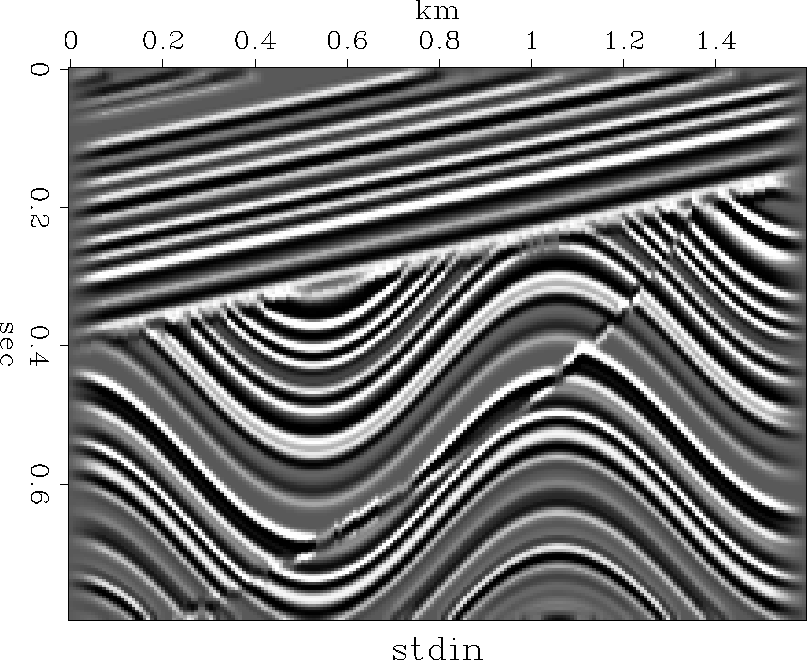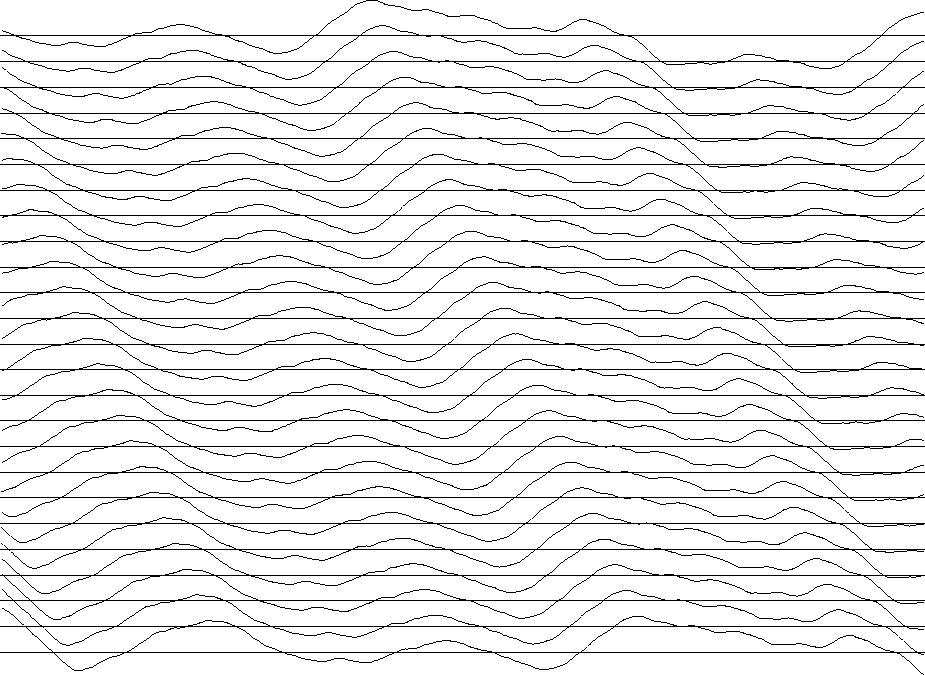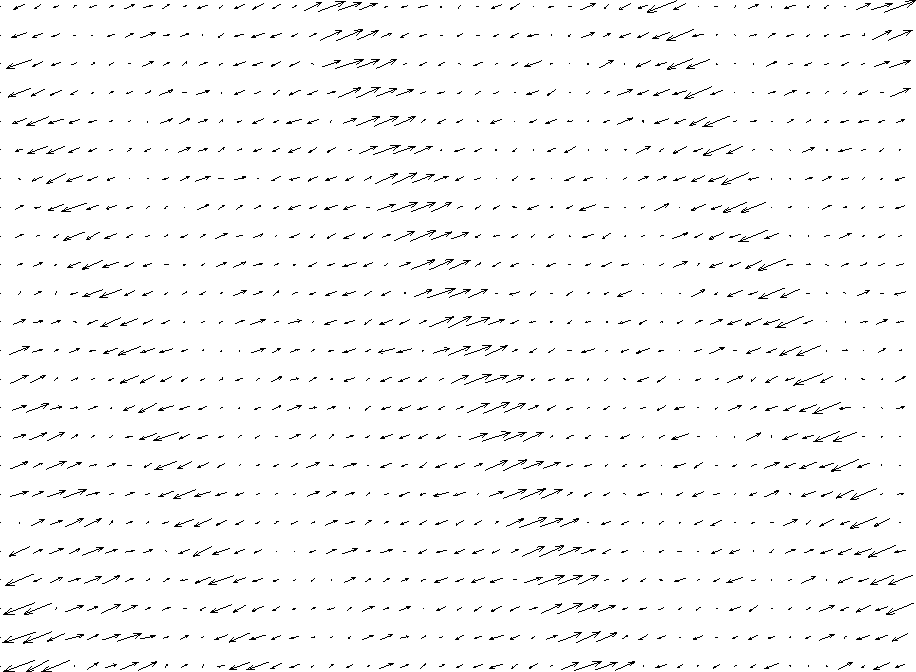|
sigmoid
Figure 1 The seismic section is folded and broken. But a small enough subvolume will approximate a plane layer volume almost everywhere. |  |
Sedimentary structures in seismic sections are sometimes compared to a cake whose every layer lies neatly upon another layer. Most Austrian pastry chiefs, however, would be horrified by the jumble of folded and broken layers that we find in most seismic sections. Nevertheless, at almost every location a small local image volume does resemble a cake (see Figure 1). The effect of large scale folding is negligible within such detailed image volumes and, despite the dip of the layers and their variable thickness, every culinary connoisseur will quickly recognize the fundamentally parallel-plane nature of such a subsurface piece.
|
sigmoid
Figure 1 The seismic section is folded and broken. But a small enough subvolume will approximate a plane layer volume almost everywhere. |  |
The plane layer volume (our cake model)
can be expressed mathematically
as a 1-D function f(x,y,z) = g(nx x + ny y + nz z)
where ![]() is the unit normal vector to all planes.
Such a one-dimensional representation is much simpler than
the general volume representation
is the unit normal vector to all planes.
Such a one-dimensional representation is much simpler than
the general volume representation ![]() .
.
The two-dimensional example in
Figure 2 and 3 illustrates the relationship
between the normal vector ![]() of a plane layer volume and its gradient
function. The image f(x,y) in Figure 2 consists of parallel
lines of constant amplitude. Consequently, the image can be expressed
as
of a plane layer volume and its gradient
function. The image f(x,y) in Figure 2 consists of parallel
lines of constant amplitude. Consequently, the image can be expressed
as ![]() where
where ![]() is orthogonal to all lines of constant
amplitude
is orthogonal to all lines of constant
amplitude![[*]](http://sepwww.stanford.edu/latex2html/foot_motif.gif) .
Figure 3 displays the gradient vector
.
Figure 3 displays the gradient vector
![]() by small arrows.
The chain rule applied to
by small arrows.
The chain rule applied to ![]() proves what
Figure 3 illustrates: the constant normal vector
proves what
Figure 3 illustrates: the constant normal vector ![]() is everywhere parallel to the gradient
is everywhere parallel to the gradient ![]() .
In general, we can formulate a simple (and maybe obvious)
detection criterion: an image volume
.
In general, we can formulate a simple (and maybe obvious)
detection criterion: an image volume ![]() is a plane
layer volume with normal
is a plane
layer volume with normal ![]() , if (and only if)
at all
, if (and only if)
at all ![]()
| |
(1) |
|
puckin
Figure 2 Input synthetic image: parallel lines of constant amplitudes. |  |
|
puckout
Figure 3 Gradient vectors at various locations of the input image. (All gradient vectors should be parallel. I believe it is an artifact of my gradient plotting program that they are not.) |  |
Equation (1) might remind the reader of the vector analysis
identity ![]() .This identity states that the curl of any conservative vector
field (a field that can be represented as the gradient of a
scalar function f (potential function)) is zero
everywhere.
All scalar fields f, including plane layer volumes, satisfy this
vector analysis identity.
However, not all scalar fields f satisfy the cross product
equation (1).
In other words, the replacement of the left differential operator
.This identity states that the curl of any conservative vector
field (a field that can be represented as the gradient of a
scalar function f (potential function)) is zero
everywhere.
All scalar fields f, including plane layer volumes, satisfy this
vector analysis identity.
However, not all scalar fields f satisfy the cross product
equation (1).
In other words, the replacement of the left differential operator
![]() by a constant vector
by a constant vector ![]() limits the set of
scalar functions f to the functions that are plane layer volumes
(with normal
limits the set of
scalar functions f to the functions that are plane layer volumes
(with normal ![]() ).
).
For example, the image volume shown in Figure 4 satisfies the conservative field identity (since it is a scalar field f), but not the cross product expression (1) (as I will demonstrate in a later section). Similarly the radially-symmetric gravitational field of a point mass is a conservative field and satisfies the general curl expression, but defies the plane layer criterion (1).
However, the conservative field
and the plane layer criterion are related if the scalar
field is a plane layer volume.
In the case of a plane layer volume, the left differential
![]() of the conservative field criterion
yields the i-th component of the plane layer gradient
of the conservative field criterion
yields the i-th component of the plane layer gradient ![]() .
.